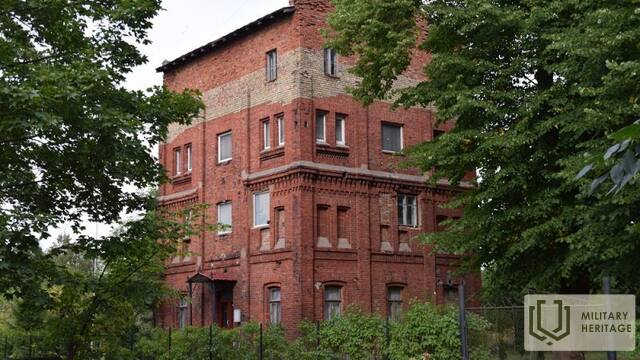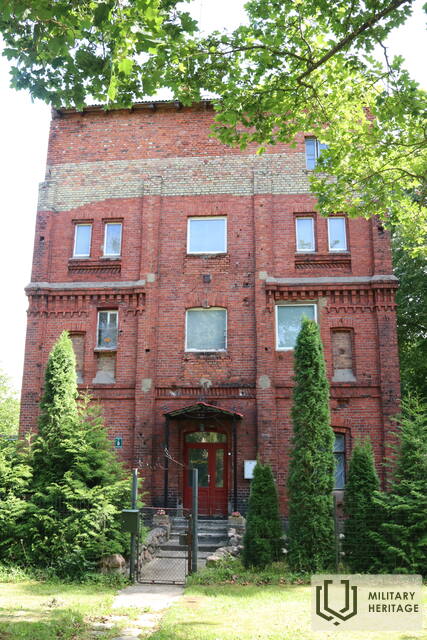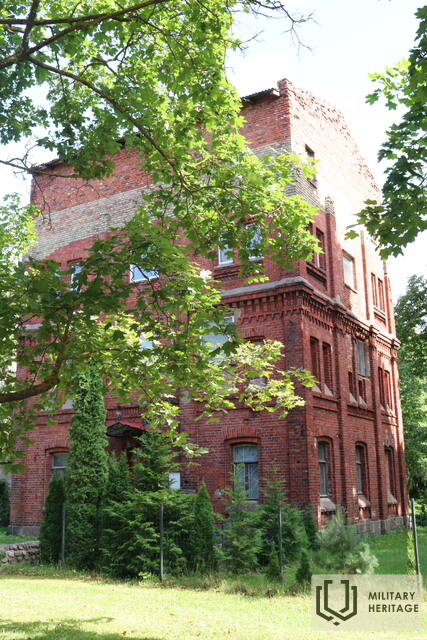Pigeon post sea station in Karosta Infrastruktūra


 121
121






The former naval pigeon station No.2 - actually a breeding station - is located in Karosta, Pulkveža Brieža iela 6. It was built between 1899 and 1900 and was intended to house about 450 carrier pigeons - winged soldiers. In later years, the building was converted into apartments, so that only the red brick volume of the building remains. The other post pigeon station, No 1, which has not survived, was intended for the use of 750 ground troops and was located at the northern end of Atmodas Boulevard.
The carrier pigeons were a simple, fast and reliable way to ensure communication between the shore and ships at sea. Although the radio telegraph, as a modern communication device, was already widely used at that time, the use of pigeons was considered safer - an enemy could only intercept a message by intercepting the carrier pigeon itself. The carrier pigeons moved at an average speed of 60 km per hour, but in favourable wind conditions they could move at speeds of up to 100 km per hour. Pigeons had to be specially prepared and trained, so handling them required care and patience. The homing pigeon's communication worked through the birds' ability to return to their home cage. When the bird was transferred to another location - a pigeon station, release and release point - and released with a message capsule, the little messenger returned to its home cage. In order to ensure communication between the two pigeon stations, it was necessary to keep a certain number of birds in each, which had grown up in the correspondent's communication, or carrier pigeon, station. Each year the pigeons were involved in various manoeuvres and competitions. Also after Latvia's independence, from 1920 to 1940, an army carrier pigeon station was located in Liepāja for the Latvian Army's Courland Division, which was able to communicate with both Riga and Daugavpils. During the inter-war period, stray communication pigeons from Germany, Poland, Lithuania, Finland and Estonia also wandered into Latvian territory. Pigeons from Latvia were also suddenly found in neighbouring countries.
The building has been rebuilt several times over the years and is now a residential building. But the distinctive shape of the building, made of the red bricks characteristic of the old buildings of the Karosta, is still clearly visible from the outside.
Susijusi laiko juosta
Susijusi istorija
Sparnuotieji kariai
XX amžiaus pradžioje buvo plačiai naudojama komunikacijos priemonė pašto karveliais arba pašto karveliais.
Unikalaus karinio objekto Karostoje istorija
Jau daug metų nepastebėjau, kad Senosios Liepojos gyventojai domėtųsi unikaliomis vietomis, esančiomis vos aštuonių – dešimties kilometrų į šiaurę nuo miesto centro. Tačiau miško tankmėje, kopų pakrantėje ar pelkių takeliuose pasislėpusios Karostos istorinės vietos – ne mažiau įdomūs istoriniai faktai ir istorijos, vertos seniai pamirštų legendų. Viena iš jų – buvusi SSRS 23-ioji pakrantės artilerijos baterija – bus šios istorijos tema.









